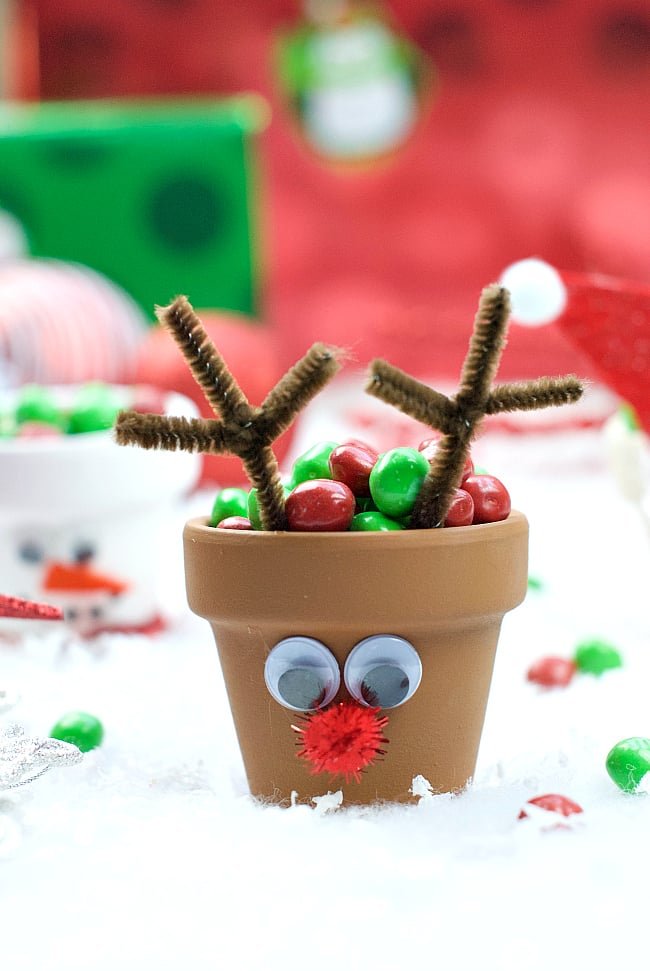Dyslexia, a term often associated with challenges in reading and language, is a condition that defines itself not just by its hurdles but by the remarkable strengths it brings to individuals. At Read Write Learning Center, where we specialize in one-on-one academic language therapy for children with learning disabilities like dyslexia, the remarkable strengths of these individuals shine through. Today, we turn the spotlight on the visual and spatial capabilities that distinguish them.
Christmas Crafts for Children with Dyslexia
Christmas break is here and most people get very excited for some down time! But sometimes, especially for young people, the school holidays can get a little boring when you’re waiting for Santa to come.
When children have dyslexia, they might find it difficult to engage in some of the festive media that surrounds them at this time of year - festive books and reading - heavy activities like baking instructions, or complex crafts might seem just a little out of their reach and overwhelming.
Here is a list of Christmas crafts and activities that somebody who has dyslexia might enjoy doing on their own with little to no external support, and that don’t rely heavily on extended reading or instructions.
Happy crafting!
✂️ - requires scissors or a sharp object
🔥 - requires time in an oven or a heated object
🎨 - requires decoration that could get messy
Christmas Candy Pots 🎨
Christmas can be surrounded by a lot of sugar. Kids will love decorating these super-fun character candy pots in which to keep their favorite candies, and they make wonderful gifts too! Simply use well-washed mini terracotta plant pots as a base and perk them up with paint and glitter, before adding googly eyes, pipe cleaners, sparkly pom poms and paper craft features to bring them to life! Just make sure you are using non-toxic glue and paints, as they will be in contact with food.
Salt Dough Festive Tree Ornaments 🔥🎨
Salt dough is a very forgiving medium that’s as easy to work with as clay, but much easier to make in your own home and much easier to clean down from surfaces and clothing. It can be easily shaped into any design or use festive cookie cutters to create a design. Here is a simple recipe for salt dough. The salt dough creations will need a short amount of time in an oven, so adult help is required during the end stages. You can leave them as they are, varnish them, or finish them with paints and glitter.
Popsicle Stick Snowflakes
Popsicle stick snowflakes are perfect for adding a personal touch to your Christmas tree. You can even hang them in the window. They are incredibly easy to make - all you need is a little glue, crayons, markers, glitter, sequins, etc. to decorate them with.
Christmas Gingerbread Cookies 🔥🎨
It just isn’t Christmas without gingerbread, and from jolly gingerbread men and women to the traditional gingerbread house, its warming smell is the perfect way to add a little festive cheer. Kids will love using cookie cutters and decorating these yummy cookies. Cooking With My Kids has a great step-by-step run down of a kid-friendly recipe and process that’s written in a simple and easy-to-follow way.
Santa Slime ✂️🔥
Who doesn’t love slime? (Well…besides the parents). Slime is one of those things that children really seem to love to create and play with. And what’s better than some super-fluffy festive slime to play with, complete with a Santa-themed storage jar to keep it in? Kids will love creating this slimy concoction, mixing it and kneading it until it comes out just right. And then, creating a Christmas-themed mason jar to keep it fresh all winter long. Scissors will be required for cutting ribbon and decorations, and the article recommends using a hot glue gun to put the decorations on the mason jar.
Pine Cone Christmas Trees 🎨
This is such a simple, yet fun craft! Collect pine cones from around your local woods, park or front yard, and then give them a little paint and some glitter to transform them into shimmering mini Christmas trees that are perfect to decorate your home with. They also make cute table centerpieces. Finish them with a star and you’ve got a mini tree!
How To Avoid Shut Downs
The Joy of Audio Books
In the realm of education, there's a powerful tool that often goes unnoticed – "ear reading." What does this term mean? It's the simple act of listening to audiobooks! Not only are audiobooks enjoyable, but they also play a crucial role in enhancing reading skills, making them an excellent option for learners of all ages.
Building Empathy
A Surprising Way to Boost Your Child's Reading Comprehension
Every parent wants the best for their child, especially when it comes to their education. If your child has a learning disability like dyslexia, you might be wondering how to support them in their academic journey. One powerful and surprising way to help your child improve their reading comprehension is by building their background knowledge. This can make a significant difference, particularly for students with dyslexia.
Let's bust some myths about dyslexia!
Dyslexia is a common but often misunderstood learning difference that affects millions of individuals worldwide. Unfortunately, there are many myths about dyslexia, and these misconceptions often keep dyslexic individuals from getting the support they need! So, let’s unravel these myths and shed light on the realities of dyslexia, bringing you a deeper understanding of this condition.
How to Help Your Struggling Reader at Home
It can be challenging to know where to start when it comes to helping your struggling reader at home. As a parent, you want to provide the best support possible, but it's not always clear what strategies will be most effective. In this blog, we will explore practical tips and techniques that can make a significant difference in your child's reading progress. By implementing these strategies, you can create a nurturing environment that fosters a love for reading and empowers your child to overcome their learning difficulties.
Navigating the School Year: A Guide for Parents of Children with Dyslexia
As we approach the start of a new school year, it's time to prepare not just the backpacks and lunchboxes but also for essential conversations with your child's teacher. For parents of children with learning disabilities like dyslexia, these conversations will set the stage for a successful academic year.
How long does instruction need to continue? How often? What progress can I expect?
How long a student will need specialized instruction depends on the severity of the problem and the frequency and length of the sessions. At a minimum, one-hour sessions should occur two times per week; optimally, four or even five sessions should be scheduled per week—for up to two hours. Instruction should continue until the student is functioning at a level of independence commensurate with age and cognitive ability. This could take two to three years or more. To master skills and apply them independently, students with a language-based learning disability, including dyslexia, need explicit instruction and consistent practice and repetition with teacher guidance—not only with development of skills but with application of these skills at higher and higher levels of functional use.
Teaching reading and other written language skills to students with dyslexia and related disorders is not a quick fix. It is hard work, and sometimes students complain about how difficult it is. At the same time, however, the students themselves are the best judges of the effectiveness of the program. Students quickly become aware that the systematic strategies they are learning allow them to identify or spell words they could not previously read or spell. They recognize their newly-learned ability to “figure out” what they could only guess previously. Although progress is often slow at the beginning, it will give them hope and motivate them to do their best and to keep trying. Significant progress becomes evident when appropriate instruction is delivered with fidelity, meaning with close adherence to the instructional guidelines of a particular Structured Literacy program, and when the instruction occurs with the necessary intensity (length and frequency of sessions; individual and small group instruction) and duration (how long instruction occurs over the months and years to come). Appropriate instruction for students with dyslexia and related language disorders is a process, not a product. For the student with dyslexia, it can be an important initial step toward a lifetime of learning.




















